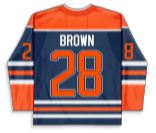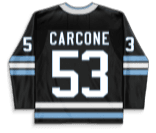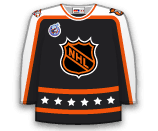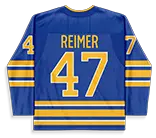
NHL Hockey Player News






Harpur is a huge defenseman (6-foot-6, 222 lbs) who plays a physical brand of hockey. Harpur averaged 1.7 hits and 1.4 blocked shots per game in 2018-19 but contributes very little offensively—1G, 4A in 51 games. Harpur could potentially be a third-pairing defenseman for Toronto in 2020 but they have a number of young defensemen in the pipelines who will be looking to push Harpur out.

Luchuk was an undrafted free agent who signed with Ottawa after his fifth year in the OHL, where he amassed 50 goals and 65 assists (115 points) in 68 games between the Windsor Spitfires and Barrie Colts. In his first professional seaosn, Luchuk split his time between the AHL and ECHL—picking up nine points (4G / 5A) in 27 games with Belleville (AHL). He will likely report to the Toronto Marlies to start 2020.

Ceci is a pending RFA but the Maple Leafs were able to move some big money and term by shipping Zaitsev to Ottawa. Ceci is a former first-round pick but has never reached the potential he flashed in the OHL. He is coming off of a 26-point (7G / 19A) season, which matches his career-high for points.

Brown has not missed a game in the last three seasons but his offensive production has dropped as he moved down the Maple Leafs depth chart. Brown was a prolific scorer in the OHL and moving to a team with a lot of young wingers will allow Brown to play an expended role and likely return to 20 goals for the first time since 2017.

Carcone moved from Utica (AHL) to the Marlies in the middle of last season and finished the year with 20 goals and 24 assists (44 points) in 62 AHL games. The 23-year-old will help bolster Belleville’s (AHL) lineup in 2020.

The Maple Leafs needed to clear some more cap space and Zaitsev was a prime candidate to be moved. The right-handed defenseman has five years left on his deal that carries a $4.5M cap-hit. Zaitsev had a solid first season in the NHL but struggled in each of the last two seasons. He showed during his days in the KHL that he has some offensive ability and maybe he will find that while playing in Ottawa’s top-4.

Deslauriers had two goals and three assists (five points) in 48 games with the Canadiens last season. Deslauriers is a rugged left winger who will likely play the entire 2020 season on the Ducks fourth-line. He has a career-high of just 15 points (in 2015).

Shaw is entering the fourth-year of a six-year contract that carries a $3.9M cap-hit. Shaw struggled in his first two seasons in Montreal but is coming off of a career-best 47 points (19G / 28A) in 63 games in the 2018-19 season. Shaw spent the first four and a half seasons of his career with Chicago, where he won two Stanley Cups.

Reimer has two years remaining on his contract that carries a $3.4M cap-hit and the Panthers were trying hard to move it ahead of free agency. Reimer, who went 13-12-5 with a 3.09 GAA and .900 SV% last year, will likely serve as Carolina’s No.2 option between the pipes in 2020.

Joseph was selected No.23 overall in 2017 and is coming off of a 47-point (9G / 38A) campaign in the QMJHL. The 19-year-old has good size (6-foot-2, 168 lbs), terrific mobility and puck skills that should make him a point-producer in the NHL in the near future. With veterans clogging up the Penguins’ blueline, Joseph is likely headed to the AHL to start the 2019-20 season.

Galchenyuk has been traded for the second time in two summers. The 25-year-old was hurt to start the 2018-19 season but finished the year with 19 goals and 22 assists (41 points) in 72 games with Arizona. Surprisingly, Galchenyuk’s minutes dropped with the Coyotes but he could easily replace Kessel in the Penguins’ top-6 and land on a line with Evgeni Malkin, which could revitalize his young career.

Birks was originally a sixth-round pick (No.164 overall) in 2013 and is simply a contract moving to Arizona. The 23-year-old spent almost the entire 2018-19 season with the Wheeling Nailers (ECHL), where he had one goal and 13 assists (14 points) in 65 games.

After registering a career-high 92 points in 2017-18, Kessel’s numbers dropped off a bit in 2018-19 but he still tied for 18thin the NHL in assists (55) and red for 23rd in points (82). Moving to Arizona should allow Kessel to play a massive role, similar to his days in Toronto. Kessel is capable of being a 30-goal, 50-assist winger for the Coyotes in 2019-20.

MacDonald had one goal in two games with the Panthers last year but spend most of the season in Springfield (AHL). The 26-year-old led all Thunderbirds’ defensemen in goals (14) and points (43) in 72 games. MacDonald is likely headed to the AHL to start 2020 as well.

NHL Trade Tracker
NHL Trade Rules
Salary Cap
Roster Limit
NHL Trade Deadline
Understanding the Strategy Behind NHL Trades
How NHL Trades Impact Sports Betting
NHL Trades FAQs
NHL trades are decided between two or more team general managers. The front office’s job is building a winning team. Building a winning team means discussing trades with other general managers across the league.
During the NHL regular season, players can be traded up until the trade deadline. The deadline is the official cutoff point for when teams can no longer make moves between each other. Players can also be traded throughout the offseason.
Teams trade players in hockey for a variety of reasons, but generally, it is done to find success, whether that is in the short term or long term. Teams may trade their top players in search of draft picks if they are undergoing a rebuild, whereas contending teams may look to acquire talent to boost their playoff chances.
Trades are a common occurrence throughout the NHL and happen often. Some years feature less trades than others, it all depends on each teams needs and the availability of attractive talent.